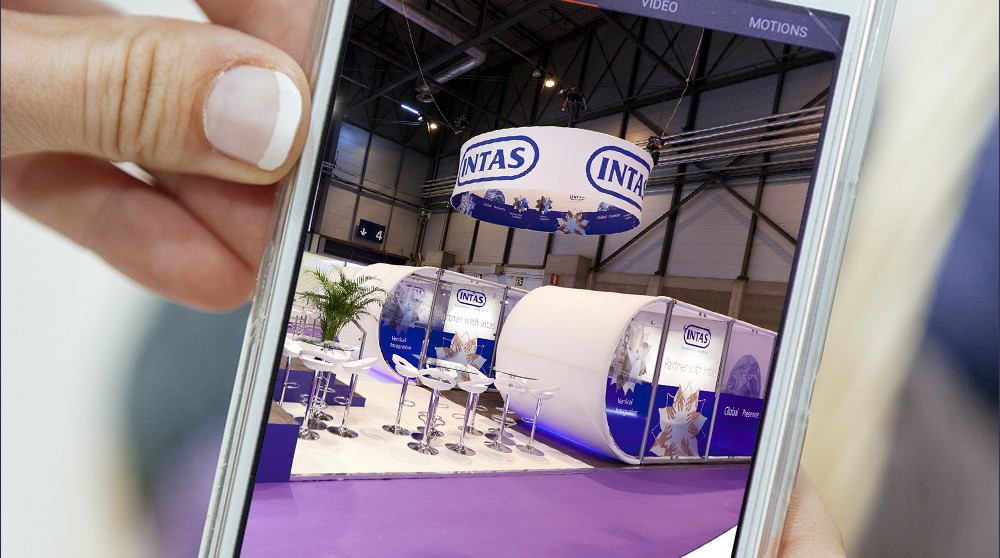Trade Show Photography: Photo Tips for Smartphones & Dedicated Cameras
By: Charlita Lisondra
Great trade show photography can make all the difference on your social media feed, blog, or website, or within your printed collateral. Yet few event professionals have the skills of a professional photographer, and many prefer relying on their smartphones rather than lugging around a bulky, traditional camera with interchangeable lenses.
But knowing a few camera tricks can go a long way in helping your photos stand out. Consider these insights and tips when deciding how to shoot your next event.
BENEFITS OF TRADITIONAL/DEDICATED CAMERAS
- Better low-light performance. Low-light is a common challenge in trade show photography, and so being able to shoot at higher ISO settings is often desirable. Smartphones let you adjust ISO, but their smaller sensors mean there much more graininess to the images than in captures taken using the same ISO settings on a dedicated camera.
- Interchangeable lenses. Smartphone cameras have fixed lenses, so they are best used for photographing subjects at a medium range. With trade show presentations and convention lectures, it’s rarely possible to get close enough to a speaker with a smartphone, so the dedicated camera with a telephoto lens is extremely valuable. Telephotos also let you capture your subjects from a distance, resulting in more natural, candid photos.
- Remote or Adjustable Flash Capabilities. Bouncing a flash off a ceiling—or setting a remote flash up to light a scene from a different angle—are common techniques for evening-out awkward indoor lighting. Here again, the dedicated camera’s many external flash options make it way more versatile than a the smartphone’s built-in flash.
BENEFITS OF SMARTPHONE CAMERAS
- Convenience. We all have smartphones, and the fact that we use them frequently means we’re typically more familiar with their camera settings and exposure tricks than we are with those bulky dedicated cameras that sit on a shelf unused for much of the trade show year. There’s an old saying: “The best camera is the one you have with you.” Since we take our smartphones everywhere, their familiarity and accessibility may alone make them the best camera choice for busy trade show reps.
- Continual and rapid innovation. The consumer money that gets poured into smartphones means manufacturers will continue to make rapid advance in smartphone camera technologies. Recent, tremendous gains in smartphone focus control, optical zooms, and intelligent exposure are forcing traditional camera manufacturers to step up their game in order to remain relevant and competitive. If there is something your smartphone can’t do today, it will likely be fixed when the next version is released.
TRADE SHOW PHOTOGRAPHY TIPS
Regardless of what type of camera you bring, the following tips will be helpful when photographing your next event:
- Bring plenty of batteries and memory cards, as well as two card readers.
- Experiment with white balance settings, as artificial indoor lighting can create an off-hue to many photos. If you shoot with a digital SLR camera in RAW mode you’ll have a lot more adjustments you can make prior to editing any given photo.
- Don’t crowd your subject. Candid portraits look so much more interesting, and it’s easier to get a natural expression from a trade show attendee when you are not right in his/her face with the camera.
- Be aware of your background. Signage other booth elements can easily look as though they are coming out of your subject’s head. Adjust your perspective for a clean background.
- Experiment with depth of field. A large aperture (or portrait mode on a smartphone) can help you isolate a subject from a busy trade show floor. But for shots involving many people, you may likely want that smaller aperture and more depth of field.
- Adjust exposure compensation downward when shooting a projector screen. The screens are typically brighter than the surrounding room, you so you may need to use flash to even out the scene’s lighting.
- Take lots of shots. When you are dealing with a group of people, one person is almost always blinking, looking away, in any given photo. The more you shoot, the more likely you are to get that one capture where everyone’s facial expression is perfect.
- Shoot a range of shots. Close-ups, macros, low-angle shots, and overhead shots will add diversity to your captures. Too many people take only medium close-ups, with the camera at eye level.
- Frame your subject with the camera. If your subject is taller than it is wide, shoot it with the camera tipped on its side. If they subject is wider than it is tall, then holding your camera horizontally will let you make the most use of the frame.
- Take group portraits outdoors, if possible. Uneven indoor lighting can make posed photos of large groups very difficult to shoot. Bring the group outside onto the event center steps to get a nice, tiered photo.




